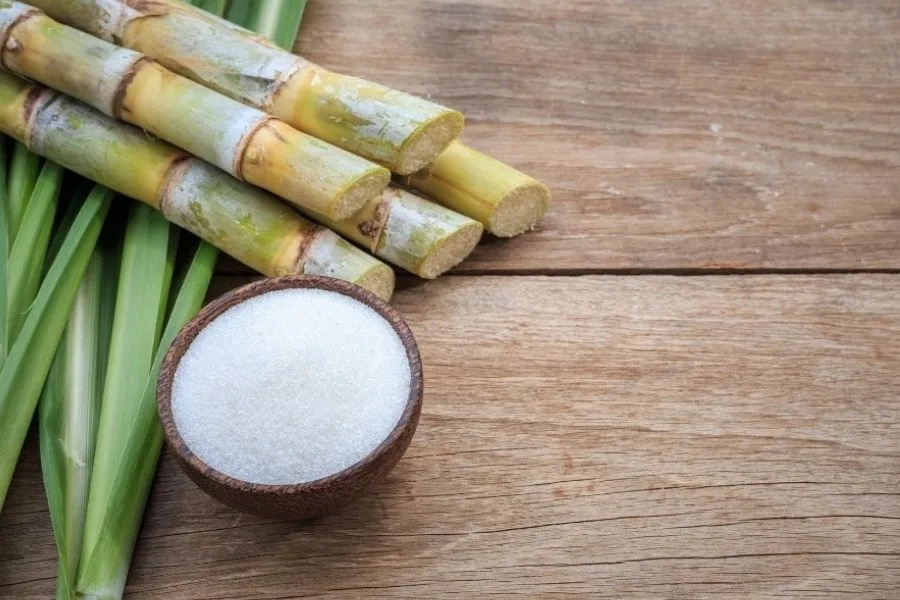Sugar Plant is a manufacturing facility where raw materials like sugarcane or sugar beets are processed to produce refined sugar, a vital commodity in various industries. The process of converting these raw materials into sugar involves a series of carefully managed steps, including harvesting, juice extraction, purification, evaporation, crystallization, and drying. Along the way, several by-products such as molasses and bagasse are produced, which can be used for other purposes like biofuels, animal feed, or ethanol production. The entire sugar production process is highly energy-intensive, requiring the use of specialized equipment like boilers, evaporators, centrifuges, and heat exchangers to ensure efficiency and optimal sugar recovery.
Harvesting
- Sugarcane or Sugar Beets: The primary raw materials for sugar production are sugarcane (in tropical regions) and sugar beets (in temperate climates). These plants are harvested manually or mechanically, depending on the region and available technology.
- Timeliness of Harvest: Harvesting must be timed properly to ensure optimal sugar content. Sugarcane is usually cut when the sucrose content is highest, and sugar beets must be harvested in autumn to prevent the sucrose from being converted into starch.
Extraction
- Crushing/Pressing: Once harvested, the sugarcane or sugar beets are transported to the factory. In sugarcane mills, the cane is washed and chopped before being passed through heavy rollers to crush the cane and extract its juice. For sugar beets, they are sliced into thin pieces (called cossettes) and soaked in hot water to extract the juice.
- Juice Collection: The juice extracted from sugarcane or sugar beets is then collected and ready for the next step. The juice contains dissolved sugars, water, and various impurities like fibers and non-sugar compounds.
Purification
- Clarification: The raw juice contains various impurities, such as bagasse (fiber from the cane), dirt, and other non-sugar substances. To purify it, the juice is treated with lime and heated. The lime helps neutralize acids and settle impurities.
- Filtration: The treated juice is then filtered to remove solids and other contaminants. Sometimes, phosphoric acid is also added to aid in the clarification process.
- Defecation and Decantation: In some processes, the juice is further treated through a process called “defecation” to remove additional impurities. This process involves heating the juice and separating the precipitated impurities through decantation.
Boiling and Crystallization
- Evaporation: The purified juice is then concentrated by evaporating the water content using evaporators or vacuum pans. This concentrates the juice into a thick syrup.
- Crystallization: Once the syrup reaches a certain concentration, it is cooled and seeded with sugar crystals, which helps the sugar molecules crystallize out of the syrup. This stage is key to forming the sugar crystals that will later be separated from the molasses.
- Multiple Stages: Crystallization is typically done in multiple stages to maximize sugar recovery. The syrup is further boiled in successive pans, with sugar crystals forming at each stage.
Separation and Drying
- Centrifugation: After crystallization, the mixture of sugar crystals and molasses is sent through a centrifuge to separate the sugar crystals from the remaining syrup (molasses). This centrifugal force separates the sugar and molasses efficiently.
- Washing: The sugar crystals are washed with water or a mild solution to remove any remaining molasses or impurities. The result is a product known as raw sugar.
- Drying: The wet raw sugar crystals are then dried using heated air in a drying drum or fluidized bed dryers. This process ensures that the sugar crystals are free from moisture and ready for packaging.
Sugar plant operates through a complex, multi-stage process that transforms raw sugarcane or sugar beets into refined sugar, which is then distributed for consumption and industrial use. Each stage, from extraction to crystallization, requires careful control to maintain high efficiency and product quality. The use of advanced equipment and energy recovery methods ensures the sustainability of the process. By-products such as molasses and bagasse offer valuable opportunities for recycling and energy generation, making modern sugar plants increasingly self-sufficient. The sugar industry plays a crucial role in global food production and continues to evolve, adopting more sustainable practices to meet growing demands while minimizing environmental impact.

